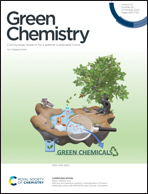Visible light promoted cross-dehydrogenative coupling: a decade update
Abstract
The visible light promoted cross-dehydrogenative coupling reaction has emerged as an excellent strategy for the direct formation of C–C/C–heteroatom bonds from simple compounds. The use of renewable energy resources without the need for prefunctionalization of the reactant synergistically promote the synthetic pathway towards green synthesis. Although the introduction of the terminology “cross-dehydrogenative coupling (CDC)” was done by Li’s group in 2004, visible light promoted CDC has attracted tremendous attention from synthetic chemists since the first report of Ir-photocatalysis by Stephenson et al. in 2010. The efficiency of different transition-metal salts (Ir-, Ru-, Rh-, Cu-, Pt-, Co-, etc.), organic molecules (eosin Y, eosin B, rose bengal, rhodamine, methylene blue, acridines, etc.), I2, and heterogeneous catalysts as photocatalysts in this transformation has been extensively investigated during this period. A number of methodologies have been also developed under visible light irradiation even in the absence of any photocatalysts. In this review, all the visible light promoted cross-dehydrogenative coupling methodologies developed over the last decade have been disclosed. Furthermore, the applicability and the mechanistic pathways of the methodologies have been also discussed.



 Please wait while we load your content...
Please wait while we load your content...